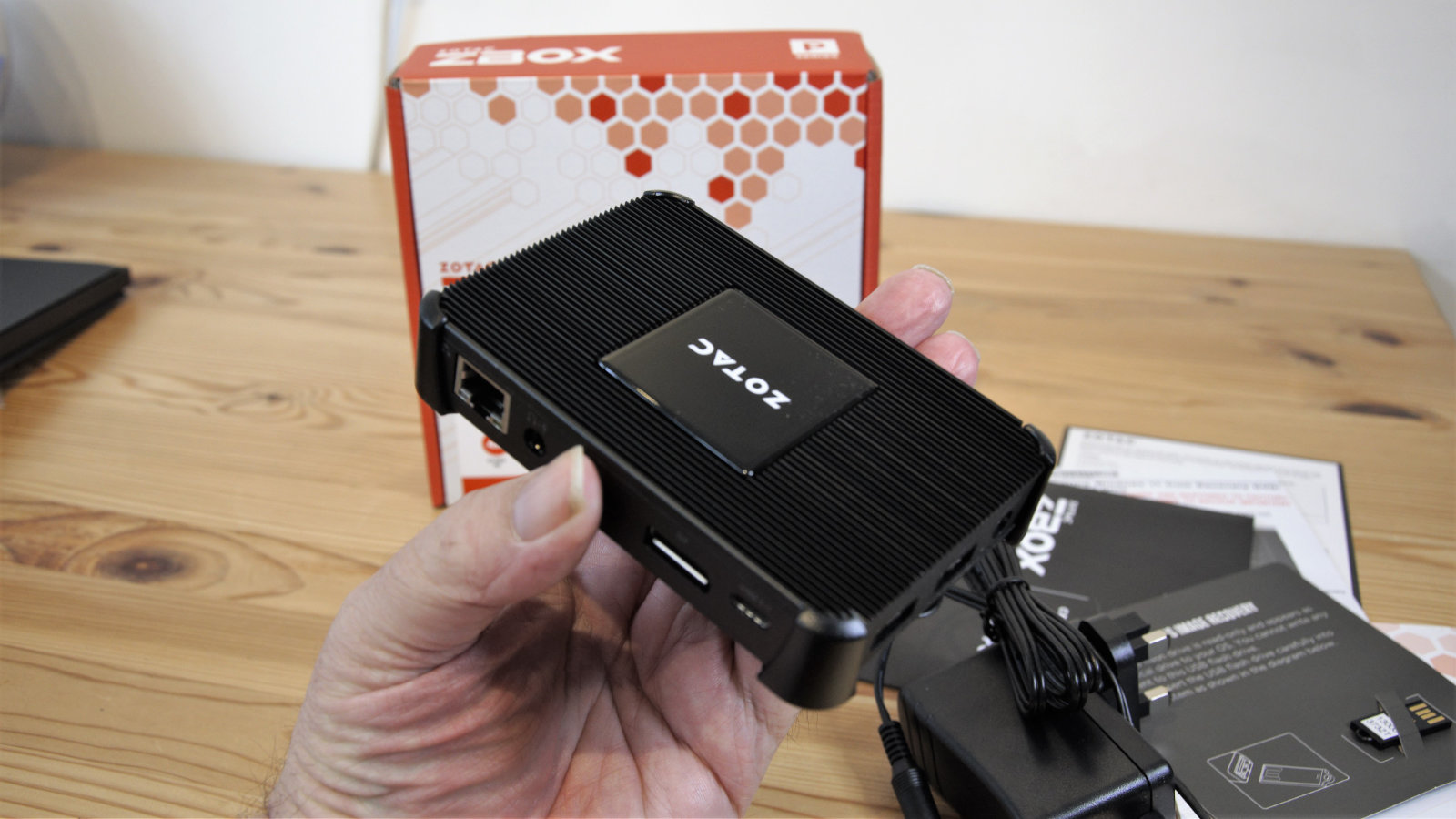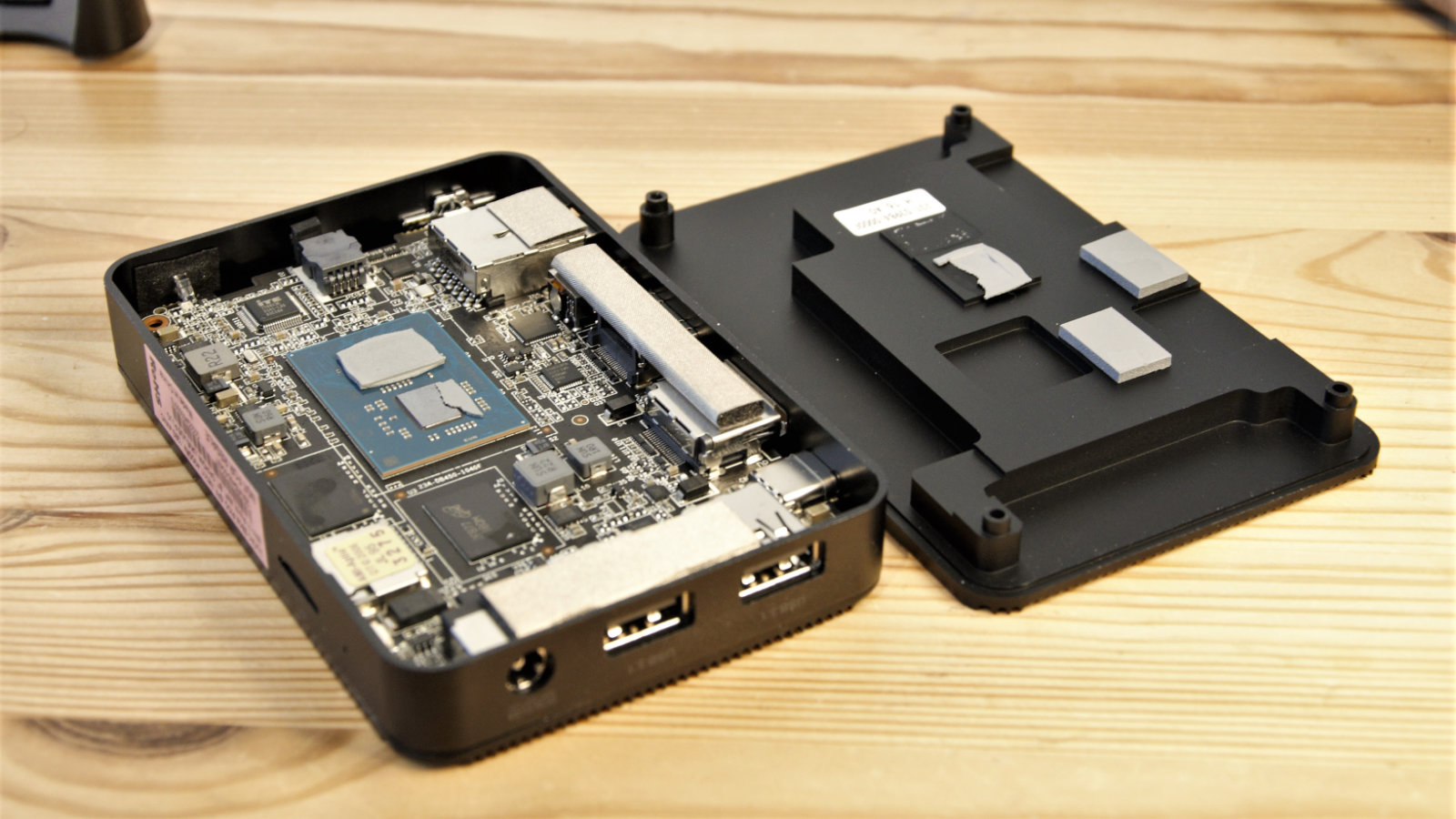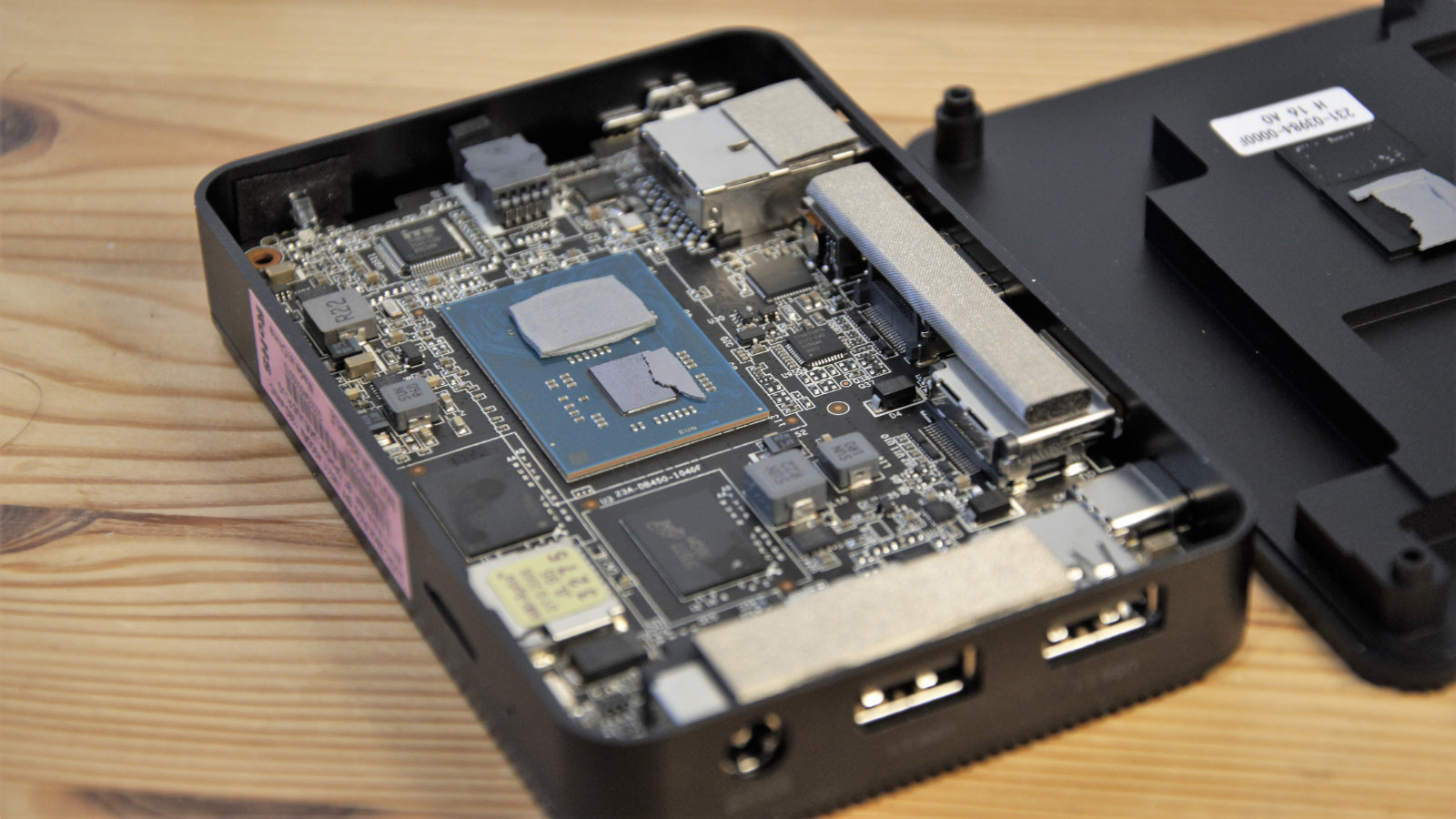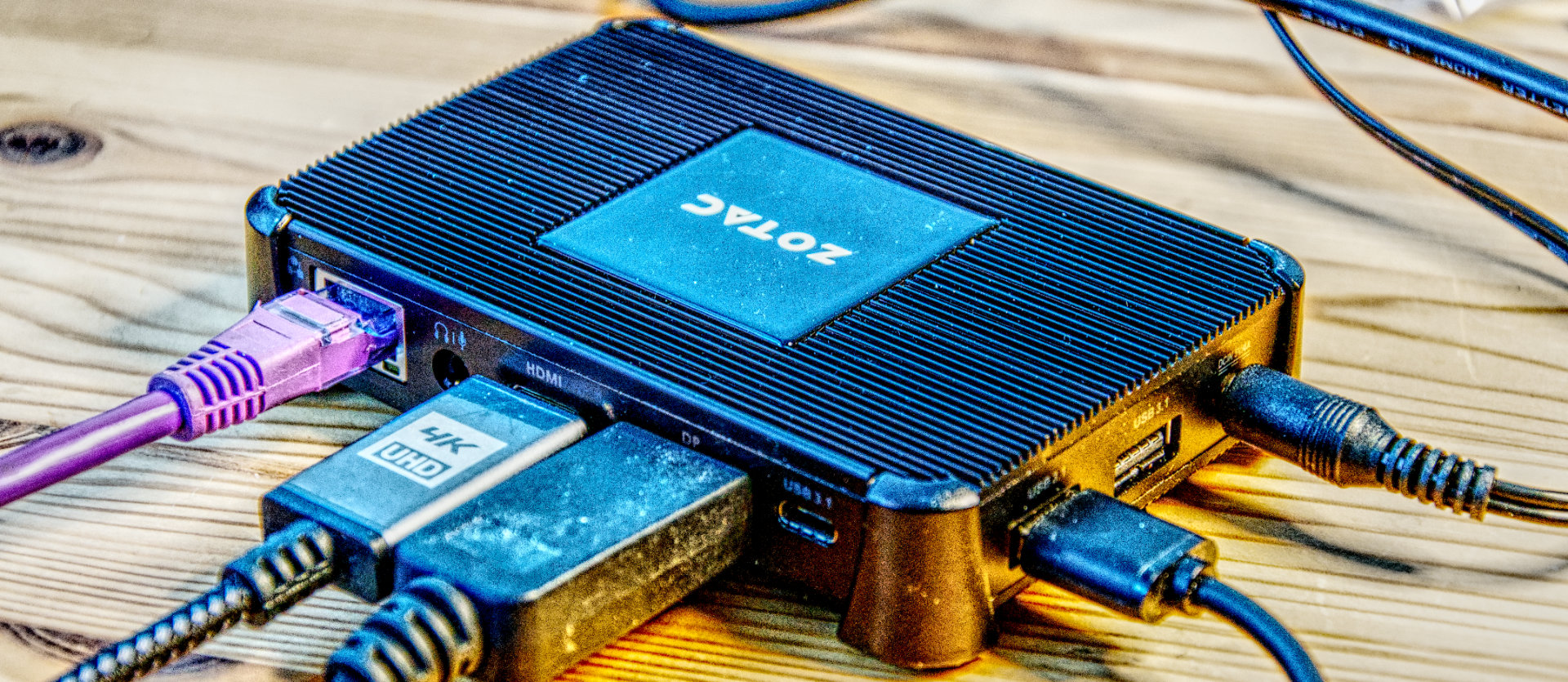TechRadar Verdict
The PI336 is caught between a performance rock and a thermally challenged hard place. As impressive as a PC this small is, Zotac appears to have ejected practicality along with the cooling fan, making this SoC even slower than it usually is.
Pros
- +
Tiny
- +
VESA mount included
Cons
- -
Slow eMMC drive
- -
Poor SoC performance
- -
Gets hot
- -
Zero upgrades
Why you can trust TechRadar
Zotac has been making small systems for some time, with a progression from small form factor down to Nano, and now even smaller.
Lots of companies made small computers, often for embedded applications or for media players, but the arrival of the Intel NUC machines focused many on what ultimately became a lucrative market.
One direction that these devices have gone is to be mountable on the rear of a monitor, effectively turning that screen into a system.
That’s the slice of the market that Zotac has aimed with the implausibly small ZBOX PI336 Pico.
Being small can have advantages for computer hardware, but is a PC this small and underpowered truly practical?

Price and availability
The Pico has yet to arrive in the sales channels but is expected to do so in the next few weeks. The UK MSRP is £319, including VAT, equating to around $300 or 320 Euros.
Once released, this hardware should be widely available through online retailers.

Design
Plenty of computers are marketed as ‘small’, some that aren’t significantly reduced in size from conventional desktop systems.
But the ZBOX PI336 Pico, or Pico as we’ll call it from this point onwards, is almost implausibly tiny.
Measuring just 115mm long by 76mm wide and 20.7 mm deep, this is incredibly petite for a machine sporting an Intel X86 compliant processor.
However, being so small has inevitably led to some compromises on the number of ports and the upgradability of this device.
The rear has a full-size HDMI and DisplayPort, allowing for the dual output to 4K, according to the marketing material. Alongside those are a gigabit Ethernet port, Headphone/Mic in combo, and a type-C USB 3.1 port.
There are two more USB 3.1 ports on the left side of the Type-A variety, but no USB 3.2 ports at all, disappointingly. The only features on the right side are a power button and its associated LED, and the front has a single MDHC/SDHX card slot for those with tiny fingers.
Each Pico comes with a plastic bracket to VESA mount the machine to a monitor and an outlet PSU to power the unit.
The construction appears to be mostly metal, with fins on the top and underside along with a ceramic plate bearing the maker's name on top. This surface modelling is critical, as the Pico is passively cooled, making it both silent in use but also desperately in need of airflow.
More about thermals later, but as you might expect with such a compact design, everything is packaged tightly inside, and while it has a removable underside, this machine wasn’t made to have owners tinkering inside.
The machine comes with Windows 11Pro N pre-installed, and a USB recovery key that can put the OS back should something catastrophic happen to that installation.

Hardware
Here is the ZOTAC ZBOX PI336 Pico configuration sent to TechRadar for review:
CPU: Intel Celeron Processor N6211 (dual-core 1.2 GHz, up to 3.0 GHz)
Graphics: Intel UHD Graphics
RAM: 4GB LPDDR4x onboard memory
Storage: 128GB of eMMC memory
Ports: 1 x USB 3.1 Gen 1 USB-C, 2 x USB3.1 Gen 1 Type-A, 1 x HDMI 2.0, 1x DisplayPort 1.4, 1 x universal audio jack, 1 x micro SDHC/SDXC slot
Connectivity: Intel WiFi 6E, Gigabit LAN adapter, Bluetooth v5.2
Size: 115 x 76 x 20.7 mm (W x D x H)
Building such a small computer requires very deeply considered part choices, and Zotac engineers went in the Pico with the Celeron N6211 dual-core processor from Intel.
Launched in 2021, this is probably one of the lowest specification processors Intel makes and is designed ideally for IoT, not personal computers. The silicon inside is the Elkhart Lake generation built for low-power PC, tablet and client system use. But this chip is the lowest rung on the Elkhart Lake ladder, with dual cores clocked at just 1.2GHz, with a boost to 3GHz until thermal dynamics chooses otherwise.
The TDP of this chip is a very low 6.5W, has a maximum of 8 PCIe lanes and the integrated Intel UHD Graphics for 10th Gen Intel Processors GPU.
And critically, for the Pico, its maximum operating temperature is 70C.
The SKU Zotac sent for review, it came with 4GB of LPDDR4X RAM and 128GB of eMMC onboard storage. Networking is via the cabled LAN or Intel WiFi 6E adapter, and the device has Bluetooth 5.2 for those that like to keep their USB ports empty.

From this specification, it’s easy to imagine that this equipment is meant for light or the very lightest duty. As the processor can handle only two threads (no hyperthreading) and the speed of eMMC storage isn’t close to SSD levels.
There is enough power to do one task well, and this device would be ideal for a rapidly deployable firewall or monitoring sensors.
What isn’t realistic is the idea that you could use this for gaming or use the dual outputs in 4K for much that would be meaningful. This CPU and GPU combination isn’t built to drive two 4K screens smoothly until it’s a slideshow you need.
It can drive one if the source is a media file, but streaming 4K content from the internet is a very stop-and-go exercise.
The general performance we’ll discuss shortly, but those expecting something dramatic here are likely to be sorely dissatisfied.
- 1
- 2
Current page: Introduction, price, design and hardware
Next Page In use, performance and verdictMark is an expert on 3D printers, drones and phones. He also covers storage, including SSDs, NAS drives and portable hard drives. He started writing in 1986 and has contributed to MicroMart, PC Format, 3D World, among others.

